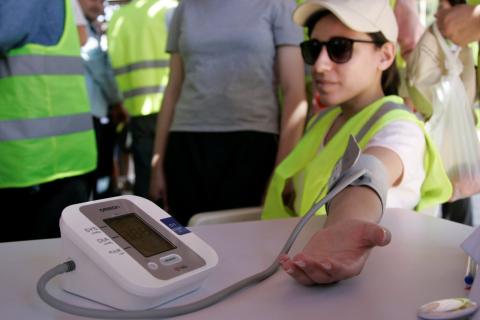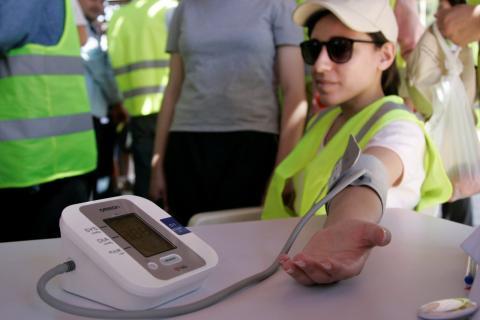
BETHESDA, Md., , Muharram 28, 1437, November 10, 2015, SPA -- Earlier this year, researchers stopped a clinical trial two years early because lowering systolic blood pressure below current guidelines was so successful at reducing death from heart disease and heart failure, according to UPI. Results from the Systolic Blood Pressure Intervention Trial, or SPRINT, were published in the New England Journal of Medicine, showing 27 percent fewer deaths and 38 percent fewer cases of heart failure among participants whose systolic pressure was lowered to 120, rather than the recommended 140. Systolic blood pressure, the pressure put on blood vessels when they contract, is the higher of the two numbers used to measure blood pressure. More than 70 million people in the United States have hypertension, which is considered systolic pressure above 140 and diastolic pressure of 90. When researchers halted SPRINT in September because the results were so compelling they said releasing the study's findings early and beginning a review of guidelines for blood pressure had the potential for "saving a significant number of lives." "What is so groundbreaking about the findings from SPRINT is that we are beginning to determine the most appropriate targets for systolic blood pressure to reduce cardiovascular morbidity and death, especially in a diverse population of older patients without diabetes," Dr. Jackson Wright, director of the clinical hypertension program at UH Case Medical Center and a professor of medicine at Case Western Reserve School of Medicine, said in a press release. "I cannot predict whether the information presented today will alter the guidelines. I can however assure that it will certainly create a discussion on the merits of treating hypertensive patients to much lower blood pressure targets than previously recommended." The researchers worked with 9,361 people who had systolic blood pressure of 130 and increased risk for cardiovascular health events, but did not have diabetes. The participants were each assigned to a group targeted at systolic pressure of less than 120, which received an average of three medications, or less than 140, which was treated with an average of two. SPRINT was stopped 3.26 years into the planned five-year study after a 25 percent reduction in primary cardiovascular outcomes -- myocardial infarction, other acute coronary syndromes, stroke, heart failure, or death from cardiovascular causes -- and a 27 percent reduction in all-cause mortality in the group aiming for 120 systolic pressure. Specifically, researchers reported a 38 percent reduction in heart failure and 43 percent reduction in death from heart-related events. The treatment was well-tolerated by participants for the most part, although lower systolic and diastolic pressures have to be monitored based on other health concerns, and complications such as syncope, electrolyte abnormalities and acute kidney injury or renal failure were seen. People with diabetes, a history of stroke, and institutionalized elderly people were not considered for the study, and aiming for a systolic pressure of 120 is not advisable. "Achieving stricter goals will probably require more careful titration of medications, greater use of combination drug preparations, more monitoring for adverse effects, and more frequent patient visits than currently occur, even though hypertension is already the most common diagnosis present in persons attending outpatient visits in the United States," researchers wrote in a commentary published with the study in the New England Journal of Medicine. --SPA 03:39 LOCAL TIME 00:39 GMT
www.spa.gov.sa/w











